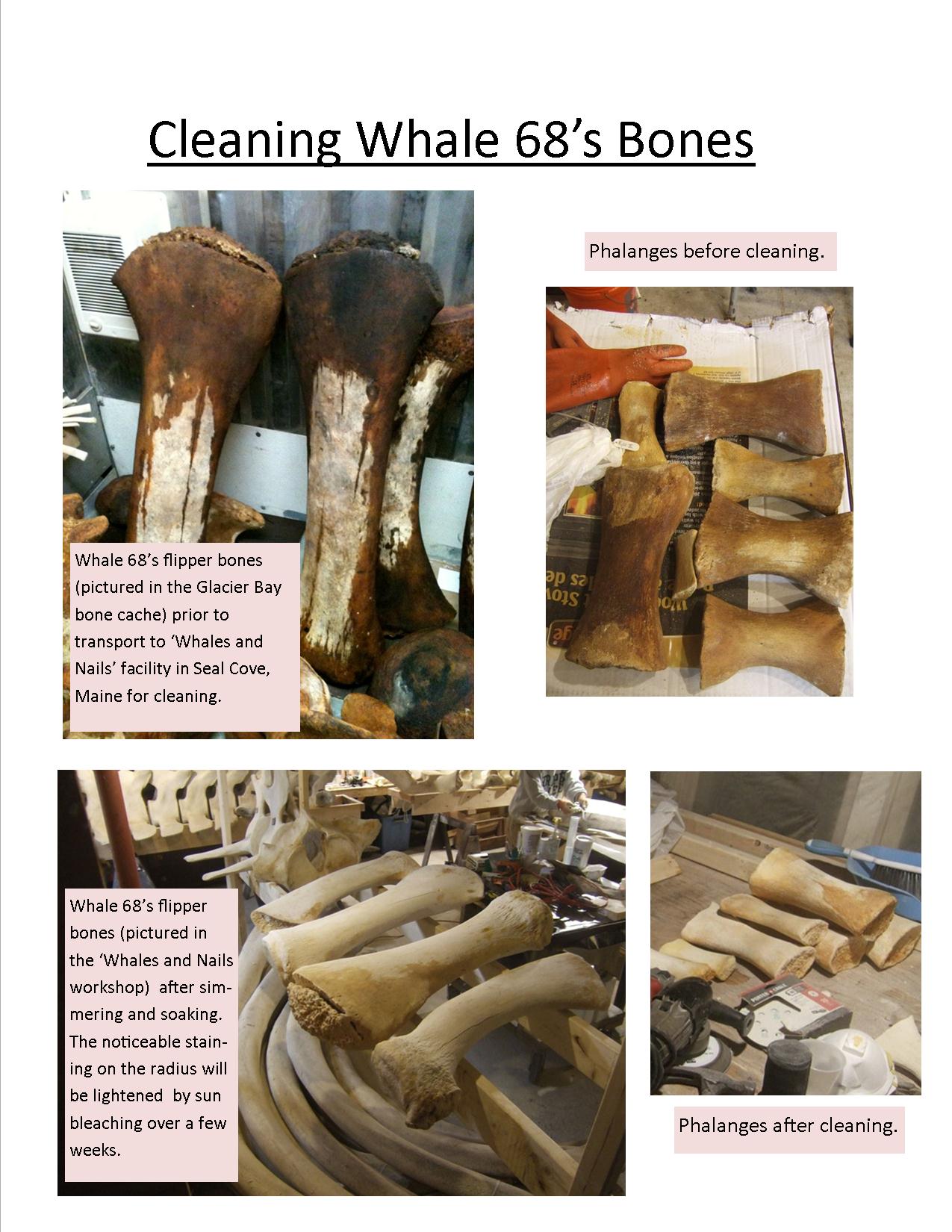Over the past several months, Dan DenDanto of 'Whales and Nails' has been busy cleaning, repairing, and fabricating new bones for Whale 68's skeleton. He has been keeping the park updated with progress photos and information. These photos are truly amazing and reveal Dan's passion for his work and depth of knowledge of this endangered species.
Dan and his crew, two graduate students, Lindsay and Courtney, have been working all winter in his basement workshop, but with warmer temperatures they will be able to move some of their work outside. The sun will be a welcome relief and important to the cleaning process by organically bleaching the bones. Once the skeleton is completely cleaned and repaired, it will be articulated and displayed in Glacier Bay National Park. Dan will begin articulation in early April 2013. The target date for installation is Fall 2013.
How does one begin to clean smelly, oily whale bones? Dan uses three methods for the final cleaning of Whale 68's bones - pressure washing, simmering, and soaking. First, he removes superficial surface mold, dirt and oil, using a hot water pressure washer. This type of cleaning is done outside using protective gear and a sturdy surface to stabilize bones. Once pre-treated, the bones go into a 140-170 degree hot water tank with a mild degreaser. This will pull grease from the inside of the bone and requires Dan to be somewhat of a "babysitter." He states, "When you are cleaning them (the bones) and you over process (boil) them, you compromise the proteins on the enamel portion of the bone and once you eat that, you will get into the cortex of the bone and this is very soft. You could gouge it out like it's a soft cork." This can be tricky because in order to regulate the temperature of his tanks, he uses a wood boiler - too much heat means over processed bones and too little means the oil is not released. Dan must be diligent in maintaining a 140-170 degree temperature over a 2-4 day time period. Small bones like the phalanges (finger bones in the flippers), may simmer for 2-3 days, while the enormous skull may simmer for up to 4 days.
Once most of the oils are released, Dan will soak the bones at room temperature in a 15% hydrogen peroxide solution. This will brighten them up and give them their natural, creamy bone color. The length of the soak depends on the color, staining and density of the original bone - bigger bones may soak as long as 5 days, the smaller bones 1-3 days. Every couple of days, Dan rolls the bones over to check on their progress. When they finally come out of the soak tank, they are placed in the sun for natural, organic bleaching.
The pictures below illustrate these processes. We think you will agree that Dan and his team have done an amazing job cleaning Whale 68's bones for articulation!
You can follow Dan's progress and learn how he is repairing Whale 68's bones in future blog posts.

